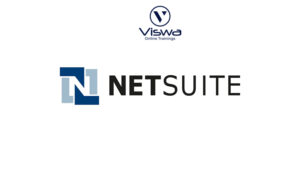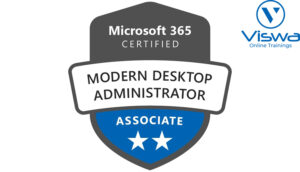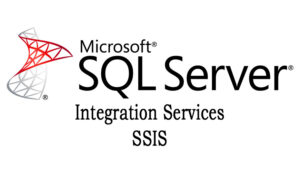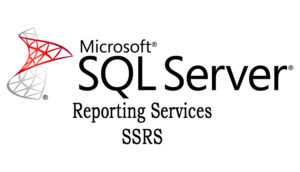Windows Server Certification Training
One of the top providers of online IT training in worldwide is VISWA Online Trainings. To assist beginners and working professionals in achieving their career objectives and taking advantage of our best services, we provide a wide range of courses and online training.
Learners : 1080
Duration : 30 Days
About Course
In this Windows Server certification course, you will learn how to manage and maintain servers using Windows Server. Server maintenance is necessary for every functioning computer network, especially in these modern businesses. This course teaches you how to configure, maintain, and set up your server using Windows server software. Additionally, you’ll learn how to identify problems and build fault tolerance into your server. Enrol right away to get certified.
Windows Server Training Course Syllabus
✔ Basic Networking concepts
✔ Types of servers
✔ Server Processors and storage devices
✔ Hard disk and storage devices
✔ Basic IP Address databases
✔ OSI layers model
✔ Introduction to server 2012R2 and 2016
✔ History of server operating system
✔ Installing Server 2012R2 and 2016
✔ Introduction to Server ISO 2016
✔ Difference between windows server 2012 R2 and 2016
✔ Windows server 2012r2 roles and features
✔ Client and server model architecture
✔ Introduction to Active Directory Domain Services
✔ Logical and physical structure of ADDS
✔ Logical and physical structure of ADDS
✔ Installing and configuring of ADDS
✔ Features of ADDS databases
✔ Introduction of FSMO roles
✔ Transferring FSMO roles
✔ Seizing FSMO roles
✔ FSMO roles migration from PDC to ADC
✔ Creating users and groups in ADDS
✔ Creating OU’s
✔ Introduction of users profiles
✔ Users and group properties
✔ Introduction of DFS
✔ Introduction of ADTR
✔ Different types of active directory trust
✔ Configuring cross-domain trust
✔ Functional levels of active directory trust and relationships
✔ Introduction of active directory sites and services
✔ Configuring different sites
✔ Adding sites to the forest
✔ Scheduling Replication between sites
✔ Exploring CDB and PDB databases
✔ User and Computer policies
✔ Scope of Policies – OU, Domain, sites
✔ Adding group policies to existing policies
✔ Software Deployment
✔ Different types of share folders
✔ Creating share and network folders
✔ Assign permissions to the user’s level
✔ Mapping share folders
✔ Introduction to DNS
✔ DNS Naming Hierarchy
✔ Types of Lookups
✔ Types of zones
✔ Types of DNS records
✔ DNS forwarders
✔ DNS updates and policies
✔ Introduction and Configuration of DHCP service
✔ DHCP Client Configuration
✔ Reservations
✔ DHCP Backup
✔ DHCP Failover
✔ DNS updates and policies
✔ Basic & Dynamic Disks
✔ Types of volumes
✔ Configuring Volumes RAID-0, RAID-1, RAID-5
✔ IIS 8.0 Configuration
✔ Hosting website and redirecting
✔ Backup and restoring sites
✔ Install the SSL certificates
✔ Introduction & Configuration of WDS server
✔ Introduction & Configuration of WSUS
✔ Deploying Patches
✔ Installing backup services
✔ System state backup
✔ Server live migration concepts
✔ Provide the interview question and answers
| Live Instructor Based Training With Software |
| Lifetime access and 24×7 support |
| Certification Oriented content |
| Hands-On complete Real-time training |
| Get a certificate on course completion |
| Flexible Schedules |
| Live Recorded Videos Access |
| Study Material Provided |
Windows Server Training - Upcoming Batches
Coming Soon
AM IST
Coming Soon
AM IST
Coming Soon
PM IST
Coming Soon
PM IST
Don't find suitable time ?
CHOOSE YOUR OWN COMFORTABLE LEARNING EXPERIENCE
Live Virtual Training
-
Schedule your sessions at your comfortable timings.
-
Instructor-led training, Real-time projects
-
Certification Guidance.
Self-Paced Learning
-
Complete set of live-online training sessions recorded videos.
-
Learn technology at your own pace.
-
Get access for lifetime.
Corporate Training
-
Learn As A Full Day Schedule With Discussions, Exercises,
-
Practical Use Cases
-
Design Your Own Syllabus Based
Windows Server Training FAQ'S
Windows server refers to is a sequence of enterprise-class server operating systems specifically designed for end-users for sharing resources or services with multiple users. This offers extensive administrative control of data storage, applications, and corporate networks.
Get ahead in your career by learning Windows Server through VISWA Online Trainings
The version of windows servers are as follow:
- Firstly, Windows Server 2003 (April 2003)
- Secondly, Windows Server 2003 R2 (December 2005)
- Thirdly, Windows Server 2008 (February 2008)
- Windows Server 2008 R2 (October 2009)
- Then, Windows Server 2012 (September 2012)
- Windows Server 2012 R2 (October 2013)
- After that, Windows Server 2016 (September 2016)
- Lastly, Windows Server 2019 (October 2018)
Windows Server 2019 refers to the operating system used for bridging on-premises environments with Azure services. This,
- Firstly, enables hybrid scenarios for maximizing existing investments.
- Secondly, make use of the operating system’s numerous levels of security to improve security and reduce business risk.
- Furthermore, Hyper-converged Architecture aids in the evolution of data center infrastructure for increased efficiency and scale (HCI).
- Lastly, it assists developers and IT professionals in the development of cloud-native applications employing containers and microservices.
- Firstly, has a storage Migration Service that helps in inventory and migrating data, security, and configurations from legacy systems to Windows Server 2019.
- Secondly, it has the capability to synchronize file servers to Azure. You can collect an organization’s file shares in Azure Files while keeping the flexibility and performance of an on-premises file server
- Thirdly, it helps in bringing local predictive analytics capabilities native to Windows Server. These predictive capabilities are backed by a machine learning model which locally analyzes Windows Server system data for providing high-accuracy predictions for reducing operational expenses.
- It uses an Azure network adaptor for easily connecting to Azure virtual networks.
- Next, it provides cluster-wide monitoring, cluster sets for creating large clusters, and Precision Time Protocol (PTP).
- Lastly, it has VM protection that helps in repeating workloads running on VMs from a primary location to a secondary.
The role of the System Administrator depends on the type of organization they are working in. However, they are responsible for installing, supporting, and maintaining servers and computers. Their day-to-day tasks include:
- Firstly, installing patches & OS Updates and reviewing the system logs access administration.
- Secondly, providing permission access administration for users.
- Thirdly, monitoring and planning for disaster recover
- Then, building and Restoring system backups
- After that, following the password requirements and accessing the control
- Lastly, examining and performing the system audit logging
Active Directory (AD) refers to an inventory organization that performs library operations for collecting objects like customer profiles, computers, etc. This controls the framework using Domain Controllers that are accessible at several zones with the Active Directory database.
Reviews
Trustindex verifies that the original source of the review is Google. I had a great experience with the Viswa Online Training. The course content was well-structured and covered all the essential topics in a very practical and easy-to-understand manner. The trainer was knowledgeable, approachable, and explained complex concepts with clarity. The mentor was also supportive throughout the training, always ready to guide and clarify doubts whenever needed. Their friendly and encouraging nature created a comfortable learning environment, which made the training even more effective. Overall, I highly recommend this training center to anyone looking to upskill.Trustindex verifies that the original source of the review is Google. Best training institute.Trustindex verifies that the original source of the review is Google. I am grateful for the opportunity to participate training with Viswa Online Training's. The training was highly informative, well-structured, and effectively covered the key concepts. The instructor's expertise and interactive approach made the learning experience engaging and practical.Trustindex verifies that the original source of the review is Google. Excellent training to immerse in Snaplogic. Benefiting from Trainer Subbu knowledge is a privilege.Trustindex verifies that the original source of the review is Google. Nice training institute. Thanks chaitanyaTrustindex verifies that the original source of the review is Google. VISWA Online Trainings is best IT training provider for SharePoint SPFX Training and best faculties with lot of patience and practical experience. Best place to work excellent training by experienced faculties awesome tech support.Trustindex verifies that the original source of the review is Google. It was a great learning experience for Oracle Apps DBA, Trainer has handy experience in the subject also his teaching style was perfect to grasp the knowledge. Study materials, Software and sample practical problems provided was excellent. I'll recommend VISWA Online Trainings for Apps DBA, already I have recommended to my friends and collogues.... Thanks, Chaitanya, for a great learning experience.Trustindex verifies that the original source of the review is Google. The introduction to SAP Ariba with Rohith and the experience were wonderful. The instructor was really helpful and skilled. The course material was thoroughly and credibly covered. Many thanks, Team.Trustindex verifies that the original source of the review is Google. Excellent way of delivering concepts and PowerShell Online Training.




